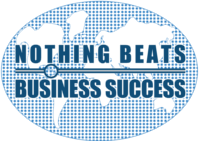“Even though you intended to do harm to me, God intended it for good” – Genesis 50:20
On my return from my first focused visit to Singapore in 1993, I wrote an article to the press entitled “Barbados the Singapore of the Caribbean”. This interest signalled the advent of a hobby to develop an innovative model for the economic development of the Caribbean which was later nurtured by a three year consulting assignment at the Caribbean Development bank and led to what is now promoted as the CBET Shepherding Model™. Incidentally, the post Singapore visit article to the press was the beginning of the Basil Springer weekly column “Strictly Business” which appears in the Barbados Advocate’s Business Monday publication. Next month will mark the twentieth anniversary of the advent of this column which has been published without interruption.
Since then writers from other Caribbean nations particularly Jamaica, Trinidad & Tobago and Barbados, which became independent from Britain in 1962, 1962 and 1966, respectively, have drawn comparisons with Singapore and noted that when Singapore became independent in 1965 these Caribbean nations and Singapore were virtually equal in wealth. Five decades later, their standing is dramatically different from Singapore. What accounts for the difference? What can be done to stimulate the economies in the Caribbean so that they can evolve towards the real success of Singapore as a small island state?
On my fourth visit to Singapore in 2007, Dr. Carlisle Boyce, a fellow Barbadian, my son Bevan, and I were privileged to have prepared for us a special presentation by the Singapore Economic Development Board entitled “Welcome to Singapore” introducing the C.O.R.E. values of The Singapore Advantage as Connectivity, Openness, Reliability and Enterprise which is at the core of Singapore’s development. Dr Carlisle Boyce was at the time the Executive Director, Industrial and Transportation Business of 3M Asia Pacific based in Singapore.
What do we mean by each of these four core values? The answers are: (1) Connectivity – Springboard to Asia, English speaking workforce, open immigration policy, air sea transport, direct telecoms to more than 100 countries and a pro-business environment; (2) Openness – welcome foreigners, cosmopolitan, Asia’s best place to live and institutes of higher learning; (3) Reliability – low investment risk, credibility, “Made in Singapore” and “Trust in Singapore”; and (4) Enterprise – vibrant enterprise ecosystem, enterprising workforce, top in Asia for ease of doing business, and #1 workforce for 25 years running.
The Economic Development Board in the Ministry of Trade and Industry is the lead Investment Promotion Agency responsible for formulating and implementing economic and industrial development strategies for Singapore. The main pillars of the EDB are to: (1) grow industry clusters in manufacturing and services; (2) attract inward investment; and (3) promote techno-preneurship towards sustaining Singapore as a compelling global hub for business and investment.
Given Singapore’s location and success with its C.O.R.E. values it seems sensible to me that Caribbean countries (presumably through the Heads of Governments caucus and the Cariforum Secretariat), since their economic growth leaves much to be desired, should stop blaming the global recession and monitor their performances against the Singapore standard, leverage its strategic location in the Atlantic between North and South America and recognize its unique selling proposition as a multi-cultural, multi-ethnic, multi-religious, multi-culinary, multi–genre (musical) and multi-lingual region and take positive incremental steps to grow the region through enterprise development which includes: (1) a vibrant enterprise ecosystem such as is promoted in the CBET Shepherding Model; (2) pay enterprising workforce in proportion to productivity with cooperation from the trade unions; (3) top in the West for ease of doing business – major gap to be closed; and (4) aim to be the #1 workforce in the west – another major gap to be closed. The longest journey begins with the first step. Singapore maintains a strong enabling environment through a strong private/public sector dialogue process. We need to learn from others; we should not reinvent the wheel.
I have attempted to make a contribution by being a conduit through which the gospel of “Shepherding” is being spread. It has been a roller coaster ride with detractors who impede the path of progress for whatever reason. However as disappointing as it was I have realized that God intended it for good and we are now witnessing a growing number of supporters for the Model and the attractive Shepherding tool the ManOBiz Matrix™.
The CBET Shepherding Model™ consists of three processes; (1) selection of enterprises to discriminate between “DNA of Elephant” and “DNA of an Ant” enterprises; (2) quick response benevolent seed/venture investment process to meet the investment needs of the start-up enterprise; and (3) the shepherding (management of business systems) process to mitigate the risk of business failure.
Even though each of the above three processes is equally important, I do not think that the importance of shepherding is well understood. It is often confused with mentoring. The shepherding is designed to reduce the high business failure rate of start-ups, in particular. Shepherding/enterprise relationship is akin to the relationship between parent and a child, whereas mentoring/enterprise relationship is akin to the relationship between a god-parent and a child. The parent is responsible for the child’s development, whereas the godparent shows up on request to fill in.
The Shepherding process facilitates the development of the enterprise by the use of the ManOBiz Matrix™ which is a dashboard (action planning, gap analysis and monitoring) tool. The Shepherds help the entrepreneurs but as has been said in many quarters we must remember that there will be no sustainable success without “sales, sales, sales! ….and hard work, hard work, hard work!”
